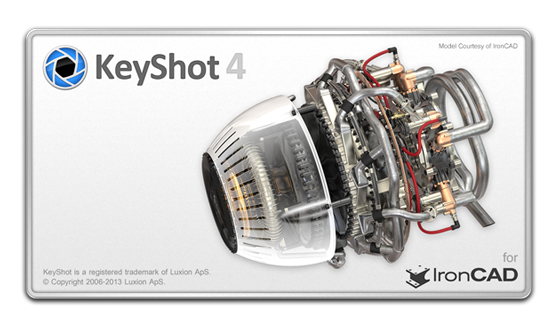

With KeyShot 6, you get the Material Graph. The material type is the foundation, on top of this you can add textures (image or procedural) and labels. You can edit any material you dragged onto your part (double-click any part) and see what material type it's made from. What you may not know is that these materials are based on material types. You all know KeyShot has hundreds of material presets.
#KEYSHOT COST SOFTWARE#
Magnus Skogsford said, "The material graph has really taken the software leaps ahead of its predecessors." And Designer, Eric Brock said, "I love the how the Material Graph allows such spontaneous creativity with immediate visual feedback." The beta testers and users jumped on this next feature with such fervor, it deserves to be among our major highlights. If you look through the KeyShot 'Amazing Shots' forum and what has been created with KeyShot 6 on their dedicated Pinterest board, it's obvious there are a lot of changes in KeyShot 6. The KeyShot lighting algorithm was optimized around this for speed with complex interior scenes, and while it does that, it also makes a big difference with lighting product shots as well.Įnter a caption (optional) Material Graph The lighting mode you want to pay attention to is 'Interior' mode. Whereas before you set up your lighting for each scene, you now have six new lighting modes and the ability to create custom lighting modes that can be reused on other scenes. This is demonstrated best in KeyShot 6 with the addition of a new Lighting tab in the Project window that contains pre-configured lighting presets. Interior LightingĮach major version of KeyShot has had improvements to the interface to help speed along the rendering process.
#KEYSHOT COST FREE#
KeyShot also has free plugins for a multitude of CAD and 3D software and support for more 3D formats than we ever knew existed. Keep that in mind as we go through these features, as real-time viewing applies to them as well. And since it's not a mode that you go in and out of, all the material changes, lighting, camera, animation and rendering all happens in real-time-you see what your final rendering is going to look like as you create it. At its core, KeyShot is real-time, CPU-based rendering. But software grows, KeyShot certainly has, so we're going to point out some of the new features in KeyShot 6 that you definitely need to add to your toolset along with some existing features you may not have known about.īefore we dive in, it's important to mention a couple of very important differences with KeyShot. People tend to use a software the same way after they get a process down. Each version has seen a lot of new features. Once we go over some of the features in the new version of KeyShot 6, you may understand that better.

There's likely a story in itself about why people would love a software program so much. Luxion's KeyShot 6 is the tool of choice when it comes to product visualization and has the ability to generate that excitement and some very impressive results for those who use it to create their concept, design, engineering or marketing visuals.Ī lot of people say they love KeyShot-we have over the years. Maybe it's the challenge or maybe it's how one tool in particular makes getting results extremely fast.

Whether you've had a love of 3D rendering that spans decades or are new to creating product visuals, there's a sense of satisfaction and excitement that comes from creating photographic quality renderings and animations of 3D geometry.


 0 kommentar(er)
0 kommentar(er)
